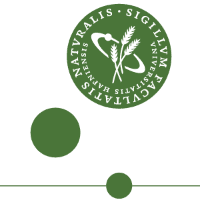Type Public university Dean John Renner Hansen Founded 1850 Academic staff 4,500 | Students 9500 Affiliations EUA, LAOTSE Total enrollment 6,117 (2010) Headquarters Frederiksberg, Denmark | |
 | ||
Established 1850 (as an independent faculty) Affiliation European University Association Similar University of Copenhagen, University of Brunei Darussalam, University of Westminster, Masaryk University, Charles University | ||
The Faculty of Science (Danish: Det Natur- og Biovidenskabelige Fakultet) at the University of Copenhagen houses 12 departments, including the Natural History Museum of Denmark. The faculty also encompasses several national and international research centres, and has a number of field stations in Denmark and Greenland, among them the university's Arctic Station in central West Greenland. The faculty's administration is housed at the university's Frederiksberg Campus.
Contents
The faculty offers three-year Bachelor of Science (BS), two-year Master of Science (MS) and a three-year Ph.D. degree programmes. There are two main areas of study programmes. One is the mathematical-physical-chemical subject group, which includes mathematics, computer science, actuarial science, mathematical economy, statistics, physics, astronomy, geophysics, meteorology, biophysics, chemistry, environmental chemistry, food science, biochemistry and nano-science. The other is the natural history-geography group, which includes biology, physical education, sports science, geology, geography, geo-informatics, geology-geophysics and bio-informatics. The University was co-founder of the Euroleague for Life Sciences (ELLS) which was established in 2001.
History
On January 1, 2004, the Botanical Institute and Zoological Institute merged into the Department of Biology, while the four museums Botanical Garden, Botanical Museum and Library, Geological Museum and Zoological Museum merged as Natural History Museum of Denmark.
In January 2005, the August Krogh Institute and the Department of Molecular Biology merged to form the Department of Molecular Biology and Physiology. Three years later it was merged into the Department of Biology.
In January 2007, the Royal Veterinary and Agricultural University was merged into the University of Copenhagen and was renamed as the Faculty of Life Sciences. Five years later it was split up, with the veterinary part merging into the Faculty of Health and Medical Sciences and the rest merging into the Faculty of Science.
Seal
The seal of the faculty contains the following text
which is written in a circle around a stylized rendering of a hafnium atom. Hafnium was discovered at the Faculty in 1923 by Dirk Coster and Georg von Hevesy, and the name of the element is derived from Hafnia which is the Latin name for Copenhagen.
Departments
The faculty’s research and teaching takes place across 12 departments. Some departments house specialized sections and laboratories.
